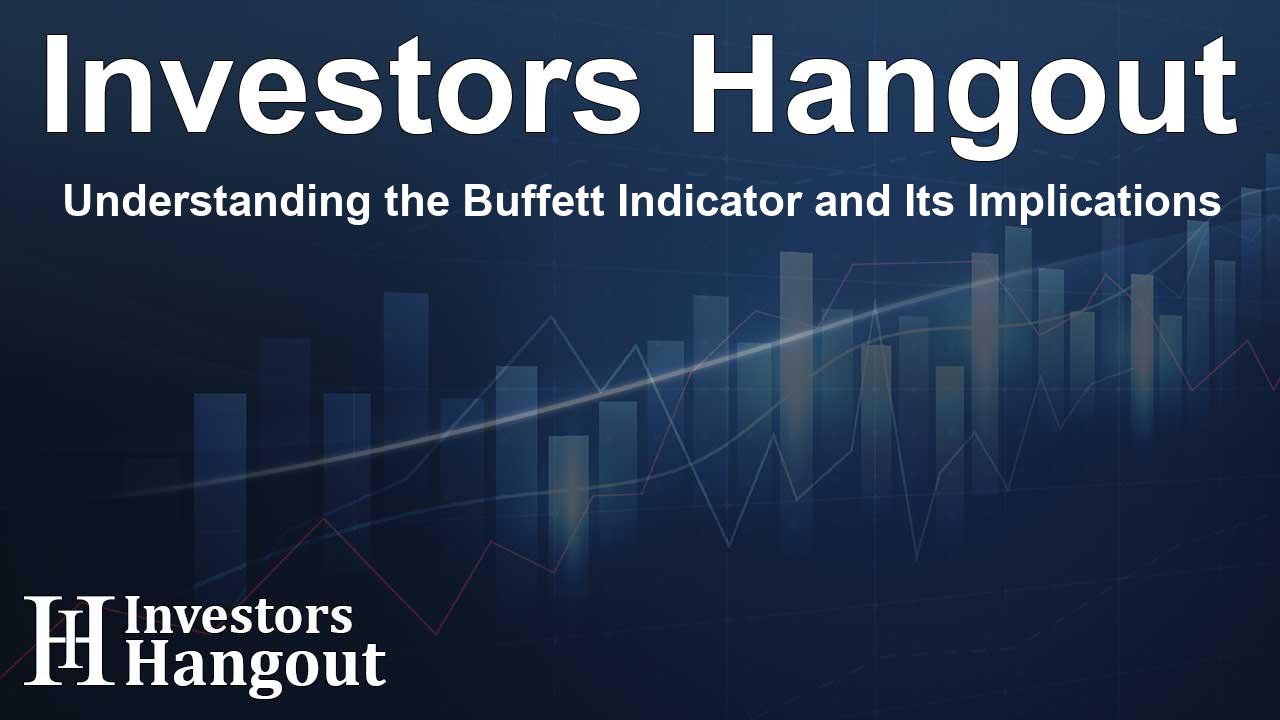Understanding the Buffett Indicator and Its Implications

Understanding the Buffett Indicator
The Buffett Indicator, made renowned by the legendary investor Warren Buffett, serves as a comprehensive gauge comparing the total market capitalization of U.S. stocks to the country’s gross domestic product (GDP). This measure is especially poignant as it provides insights into whether the stock market is overvalued or undervalued compared to the economy's overall health.
Why It's Significant
The Buffett Indicator gives investors a broad overview of the equity market's valuation. In essence, if the value of the market exceeds GDP significantly, it might suggest that stocks are overpriced. Recently, the indicator has shown particularly concerning metrics, with current readings reflecting a market value that exceeds the GDP by staggering proportions.
The Numbers Behind the Indicator
As the latest figures indicate, the total U.S. stock market value has escalated to a ratio above 200%, based on the Wilshire 5000 index. Furthermore, a version that focuses specifically on the S&P 500 shows a ratio near 176%. These statistics can prompt discussions among investors about potential corrections or pullbacks in the market.
Market Trends and Duration
Historically, the Buffett Indicator has indicated overvaluation for several years. However, this caution hasn't always translated into market downturns. For example, since 2017, the S&P 500, tracked via the Vanguard S&P 500 ETF (VOO), has surged nearly 170%, despite the indicator's warnings. This effective bull market denotes strong corporate earnings and favorable fiscal policies amid investor caution.
What Investors Should Consider
While the Buffett Indicator can serve as a useful tool, investors should approach this signal with discernment. Its historical implications suggest a potential for long-term mean reversion; nonetheless, it does not offer precise timing for market movements. Therefore, using the Buffett Indicator alongside other metrics and economic indicators is advisable.
The Shift in Market Dynamics
In recent years, various factors have contributed to the persistent strength of the market. Low-interest rates have made borrowing attractive, thus fueling the demand for risk assets. Additionally, substantial government spending has injected liquidity into the economy, providing further support for equities.
What Lies Ahead?
Despite the high valuations indicated by the Buffett Indicator, the market has shown resilience. Investors should remain vigilant, monitoring both economic trends and valuations. While extreme valuations could eventually lead to corrections, the timing of such shifts remains challenging to predict. The evolving landscape highlights the need for a nuanced approach to investing in today’s financial environment.
Frequently Asked Questions
What is the Buffett Indicator?
The Buffett Indicator measures the total value of the U.S. stock market compared to the country’s GDP, suggesting market valuation levels.
Why is the Buffett Indicator important?
This indicator helps investors gauge whether the stock market is overvalued or undervalued relative to the economy's size.
How has the S&P 500 performed despite the Buffett Indicator's warnings?
Despite warnings from the Buffett Indicator about overvaluation, the S&P 500 has significantly increased in value over the years due to strong corporate performance and low rates.
Should investors rely solely on the Buffett Indicator?
While the Buffett Indicator is useful, it should not be the only metric investors use. A combination of economic indicators can provide better insights.
What does the future hold for the stock market?
The stock market’s future is uncertain; factors like interest rates and fiscal policy will play crucial roles in determining its direction.
About The Author
Contact Addison Perry privately here. Or send an email with ATTN: Addison Perry as the subject to contact@investorshangout.com.
About Investors Hangout
Investors Hangout is a leading online stock forum for financial discussion and learning, offering a wide range of free tools and resources. It draws in traders of all levels, who exchange market knowledge, investigate trading tactics, and keep an eye on industry developments in real time. Featuring financial articles, stock message boards, quotes, charts, company profiles, and live news updates. Through cooperative learning and a wealth of informational resources, it helps users from novices creating their first portfolios to experts honing their techniques. Join Investors Hangout today: https://investorshangout.com/
The content of this article is based on factual, publicly available information and does not represent legal, financial, or investment advice. Investors Hangout does not offer financial advice, and the author is not a licensed financial advisor. Consult a qualified advisor before making any financial or investment decisions based on this article. This article should not be considered advice to purchase, sell, or hold any securities or other investments. If any of the material provided here is inaccurate, please contact us for corrections.
